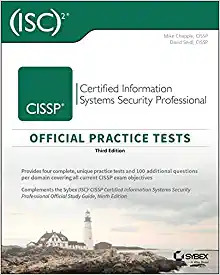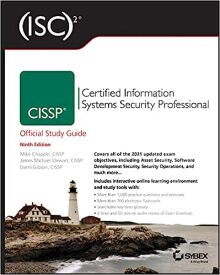
CISSP Domain 7 — Security Operations
Domain 7 — Security Operations
Know the "data lifecycle" phases, really a sequence
and not a cycle:
Create
Store
Use
Share
Archive
Destroy
Legal
See the lists in Domain 1.
SIEM or Security Information and Event Management
- Aggregation
- Normalization
- Correlation
- Secure storage
- Analysis
- Reporting
Backups
- Full: All data, most expensive to collect.
- Differential: All data changed since the last Full. Fastest and easiest to restore: last full and last differential.
- Incremental: All data changed since the last Full or Incremental. Fastest to make backups. Slowest to restore: last full and all subsequent incrementals in order.
BC / DR Concepts
- Goal is usually "five nines", 99.999%, under six minutes per year
- MAD = Maximum Allowable Downtime — Cannot be down longer than this. (or company fails, perhaps)
- RTO = Recovery Time Objective — We want to be back up this soon. (significantly faster than MAD)
- MTTR = Mean Time To Recovery — On average, recovery takes this long.
- RPO = Recovery Point Objective — We can afford to lose this much.
- MTBF = Mean Time Between Failures — On average, it fails this often.
- RSL = Recovery Service Level — During disaster and following recovery, we need at least this much.
"About twice a year we have a major storage failure. We make backups nightly starting at 1 AM. Our goal is to get data restored within 1 hour. If we went 8 hours without data, our company would financially suffer. Over the past year, our data recovery process has averaged 41 minutes. While recovering one file system, we need at least 80% normal performance on the other unaffected file systems." For that story:
- MTBF = 6 months
- RPO = Within the past 24 hours
- RTO = 1 hour
- MAD = 8 hours
- MTTR = 41 minutes
- RSL = 80% or 0.8
RAID, SAN, and NAS
There's far more to RAID in reality, all you need to know is:
- RAID 0: Zero redundancy, striping only for performance
- RAID 1: One complete extra copy, mirroring.
- RAID 5 and RAID 6: Combine striping and parity (redundancy) for performance and resilience. 6 has more redundancy, so it's more resilient.
- RAID 10: Combines RAID 0 and RAID 1 for performance and resilience.
Storage Area Network or SAN: Typically use Fibre Channel and iSCSI.
Network-Attached Storage or NAS: Typically an NFS server.
BC/DR Testing
In order of increased complexity, cost, intrusiveness, and risk:
- Read-Through / Tabletop
- Walk-Through
- Simulation
- Parallel
- Full Interruption

